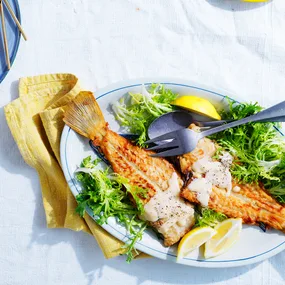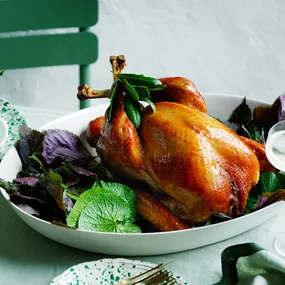A staple in traditional Russian cooking, the blini is as versatile as it is enduring, writes Emma Knowles.
Let’s get this straight from the outset: blini is plural. Blini are multiple blin. There is no such word as blinis. There, now that’s done, we can get on with the ins and outs of making these dainty mouthfuls, a must-have in the entertainer’s arsenal, perfect as they are to elegantly snack on, drink in hand.
Blini are yeast-leavened buckwheat pancakes (if they don’t contain buckwheat, they’re not blini) hailing from Russia and dating back to pagan times – as far back as 2 AD. Maslenitsa, a sun festival celebrating the end of winter and the imminent arrival of spring, spanned an entire week (not surprising given the length and bitterness of a Russian winter). The round and golden blini were said to represent the sun, and were consumed with gusto throughout the festival. Suffice to say, skilled blini-makers were in hot demand at such times.
Many centuries later, the cultural importance of the blin in Russian tradition remained strong: a new mother would eat a blin to bring luck to her newborn; blini were considered essential eating at funerals. And today, they are embraced just as wholeheartedly around the world.
According to Alan Davidson’s Oxford Companion to Food, a blin is “10cm in diameter and only a few millimetres thick… made from a batter of buckwheat flour leavened with yeast and further lightened with beaten eggwhite and whipped cream.”
While we’ve used buckwheat flour – available at select delicatessens and health-food shops – we’ve lightened it by mixing it with plain flour. Instead of whipped cream, we’ve opted for the subtle lactic tang of buttermilk. By all means you can make a 10cm version à la Mr Davidson, but we’ve opted for bite-sized blini about 4cm in diameter – all the better to eat in one neat, cocktail-friendly bite.
Making blini isn’t difficult, but it does require patience and a certain lightness of touch. You can’t rush the process; you need time for the yeast to prove and then more time to stand at the stove, flipping the little rounds of batter.
It’s important to note the temperature of the milk mixture when adding it to the dry ingredients. The liquid needs to be at blood temperature to allow the yeast to develop and leaven the mixture: 37C or just lukewarm to the touch. Too hot and the yeast will be killed; too cool and the yeast will fail to activate. Cover the bowl of mixture with a damp tea towel and set it in a warm place to facilitate the proving process – when it’s ready, the surface of the mixture will be a mass of bubbles.
Additional leavening comes from the whisked eggwhites, so be gentle when folding them into the base mixture after proving – you’ll want to retain as many of the yeast bubbles as possible and keep the air in the eggwhite. And, at all stages, be careful not to overwork the mixture to ensure delicate, tender blini.
In terms of equipment, a non-stick frying pan is the ideal cooking vessel. You’ll also need a pastry brush for greasing the pan lightly with butter, and a small palette knife for turning the blini.
Russian tradition aside, we think the reason they’ve stood the test of time is their subtle nutty flavour and pillowy texture. That, and the fact that they make a perfect vehicle for all manner of toppings. Anyone who has enjoyed them still warm from the pan with caviar will already be converted to the joys of blini. Other traditional accompaniments include chopped boiled egg, herring, smoked fish and sour cream. Modern variations include scrambled egg, and the smoked trout topped with a delicate fennel salad and salmon roe we’ve made here.










